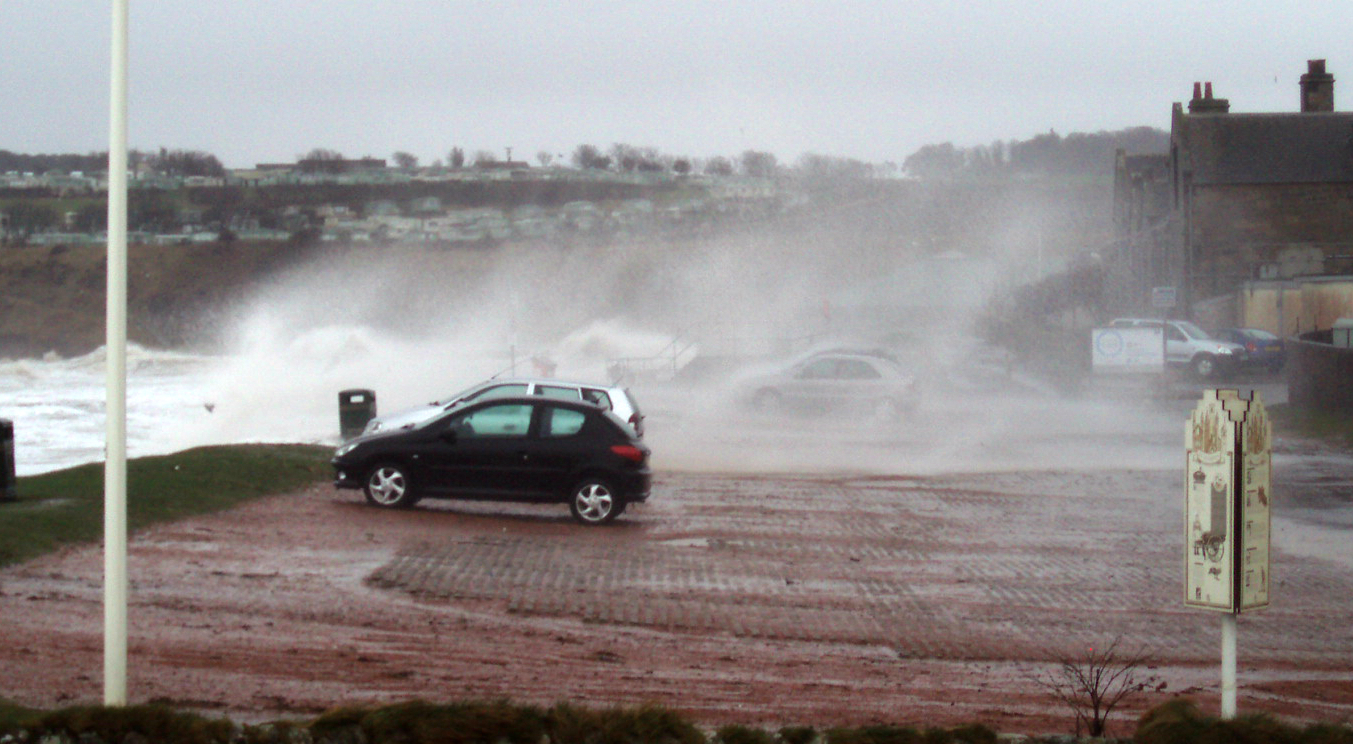Assessing current and future climate threats and opportunities with the University of St Andrews

Introduction
Situated on the east coast of Scotland, the University of St Andrews is tasked with the challenge of both the maintenance of historic buildings and improving the resilience of its historic and modern buildings to the impacts of a changing climate.
This case study* explains how the University has undertaken a climate impact assessment workshop with staff and senior managers from the Estates department with the support of Adaptation Scotland. The University of St Andrews is a member of Adaptation Scotland’s Adaptation Learning Exchange Network.
*Download the full text from the right-hand column.
What is a climate impact assessment?
A climate impact assessment is a process that allows an organisation to assess their current and future climate threats and opportunities for their critical functions, and to respond by identifying strengths and weaknesses to managing the threats. The exercise is based on a SWOT analysis.
What are the benefits?
Working through a climate impact assessment raises awareness of the impacts of severe weather events facing each department, or service of an organisation. By involving Service Managers, you will be able to use their operational knowledge to inform the process and increase their understanding of the climate threats and opportunities. The approach allows others within the organisation to identify and implement actions that increase climate resilience, which encourages climate resilience to be embedded across the organisation and reduces the time pressures on one member of staff.
The process
A climate impact assessment workshop was run with the Estates department at the University of St Andrews. The exercise involved working through the following questions:
1. What are the current climate related threats to the department?
2. What are the future climate related threats to the department?
3. What are the departments’ strengths – what are you already doing well to manage the threats?
4. What are the departments’ weaknesses – what are the barriers to managing the threats?
5. What opportunities does a changing climate present for the department?
6. What more could be done to manage the threats?
The findings
1. Current climate threats
The Estates department identified a number of climate threats based on severe weather events that had occurred in recent years. This included high wind speeds which caused damage to the cladding of roofs, heavy rainfall resulting in surface water flooding, a storm surge that ran alongside the Estates’ building and coastal erosion to cliffs that house University buildings.
2. Future climate threats
Staff noted that an increase in heavy rainfall could cause: blocked or over-topping drains as they reach full capacity; flooding of ground floors, and the deterioration of traditional stone buildings, internally and externally, as they become saturated with water. In addition, they noted that increased temperatures could cause staff discomfort on warmer days.
3. Strengths
Building maintenance is currently being managed using condition surveys, Computer Aided Facilities Management (CAFM) software and site knowledge. Staff referred to having a crisis management plan that details what to do in the case of a flood event. They also noted the use of back up generators in the event of power failure.
4. Weaknesses
Staff are investigating prevention of the deterioration of traditional stone buildings in a changing climate and felt more guidance was needed to better understand this element. In addition, more clarity was needed over the responsibility for the drains in town which affect University buildings.
5. Opportunities
Identifying increased heavy rainfall as a climate threat is useful for the department to be able to make improvements to, for example, the material of ground floor doors and the width of gutters, as and when funding allows. Design teams for new projects now report on how they have considered adaptation to climate change in their processes.
6. What more could be done?
Staff felt that there were preventative measures for increased heavy rainfall. This included filling and storing sandbags before a flood event occurs, preventing grease from entering and blocking drains, and clearing gutters more often. Other actions included implementing a data recording system for weather event information, embedding climate change in business continuity plans, and opening a dialogue on climate change through the introduction of a newsletter.
Next steps
Our next steps are to have a follow-up discussion about climate change thresholds and to develop an adaptation action plan for the department and later expand this to include all services and departments across the University.
Recommendations
1. Work with departments that are either engaged already first and/or those that you believe to be most affected from climate impacts now and in the future;
2. Don’t be scared by the prospect of undertaking a climate impact assessment – it is a way of having a structured conversation and doesn’t require in depth knowledge of climate projections;
3. Follow up your workshop by discussing how to implement those quick wins, and develop a plan for implementing the remaining adaptation actions as soon as possible. Once people are engaged, it’s important to keep the momentum going.
(0) Comments
There is no content